You’ll share this apartment with a stranger — but don’t dare call it a dorm
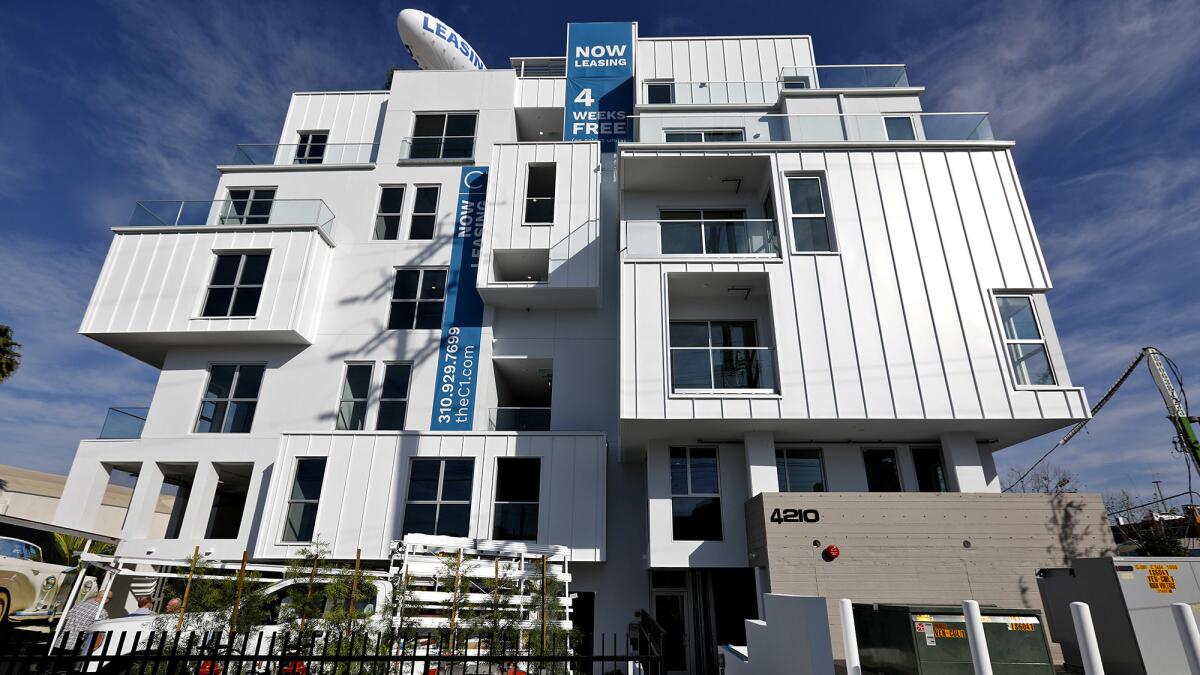
- Share via
The first step into a posh new apartment building near Marina del Rey feels like a mistake. There’s no lobby — instead the door opens to a lounge and kitchen.
The idea is to encourage mingling, which is part of the appeal of a building where tenants have their own bedrooms but share common areas with people they don’t know.
But this is not your typical L.A. roommate situation. The bedrooms are spacious, the living rooms are furnished — and the residents are often selected by the landlord.
Welcome to “co-living” in a time of sky-high rents.
The shared economy has transformed how we get around, how we travel, who sits next to us at the office and, now, with whom we share our private spaces.
Real estate developers like California Landmark Group, which owns apartment building C1, are pioneering a new way of living by primarily catering to young professionals and creative types who enjoy luxury digs but can’t swing the rent in desirable neighborhoods such as the Marina.
And while stretching out on a sofa with a stranger may strike many as unusual, it is not much of a leap to people already comfortable with Uber and Airbnb, said Ken Kahan, founder of the Los Angeles-based development company.
“People get in other people’s cars and sleep in other people’s beds,” he said. “This is a natural expansion of the housing market in the shared economy.”
Co-living has the benefit of offering renters in search of social connection the chance to bond with new acquaintances in similar situations, but its fundamental appeal may be economic.
Individual tenants at C1 pay at least $2,000 a month in the nearly $40-million building, which just opened. But that’s still cheaper than comparative singles in the neighborhood and $600 less than conventional studios also available for rent in the complex.
Typically, a co-living renter has a private bedroom and can spring for a private bathroom, but shares the kitchen, living room and other communal spaces. Units are furnished — sometimes at an Instagram-worthy level — and the rent usually includes services that aren’t covered in other apartments, such as utilities and Wi-Fi.
C1 even offers Netflix and maid services to head off squabbles over whose turn it is to vacuum the floor and scrub the sink.
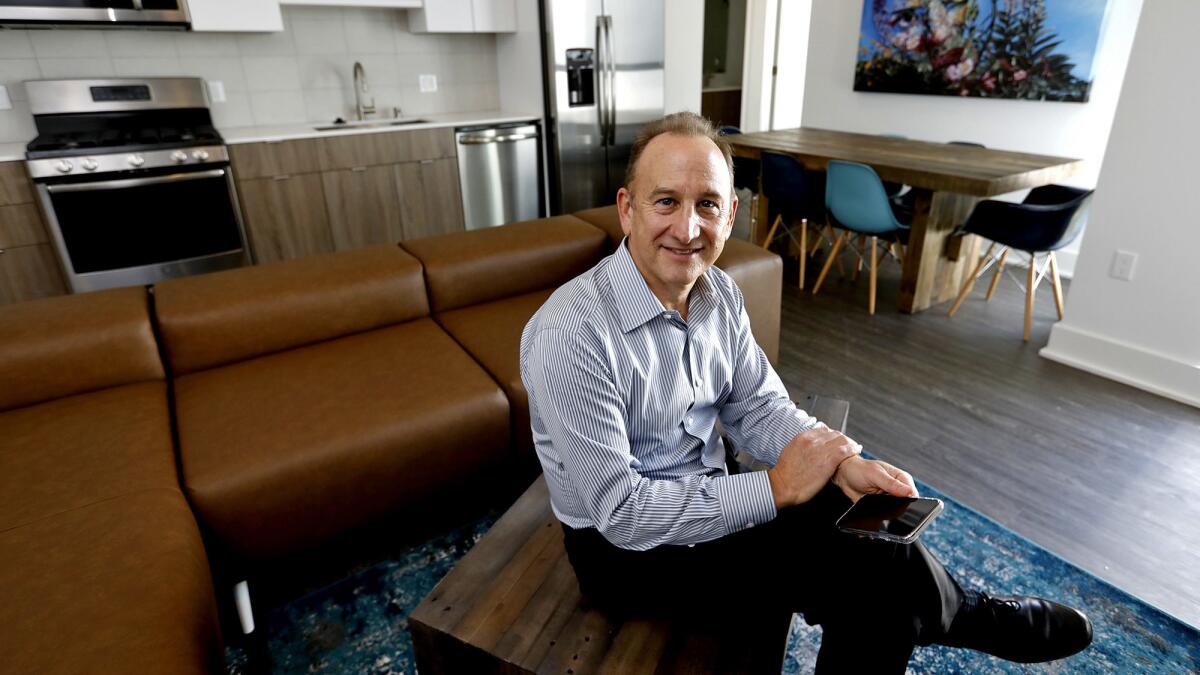
Co-living complexes have grown fairly common in European cities such as Berlin, London and Dublin, Kahan said, and are now springing up in New York, Seattle, San Francisco, Los Angeles and other American urban areas.
They come in different iterations. Some companies contract with landlords to refit entire buildings or carve up individual units so that a two-bedroom might fit additional tenants who squeeze into bunk beds or live in a partitioned living room.
Developers such as Kahan are taking the next step: building from the ground up and foreseeing a time when co-living is a new property category, like assisting living complexes designed to serve the growing numbers of wealthy seniors.
A portfolio of buildings in an established property class can get funded by banks, purchased by pension funds and even securitized in real estate investment trusts.
For now, though, co-living is still in its infancy and is considered somewhat experimental. But if the small developments emerging in trendy housing markets like Marina del Rey, Venice and Echo Park succeed, more will probably follow.
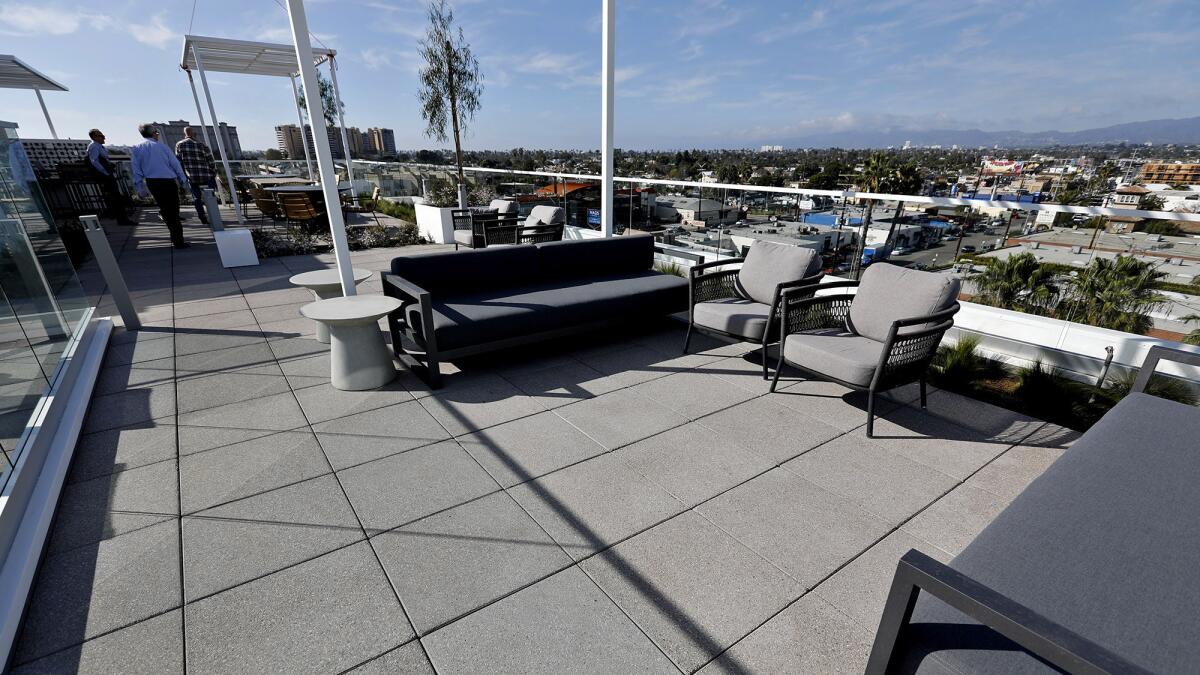
Another co-living housing developer, Anil Khera, sees a link between co-living and the upmarket student housing complexes that have sprung up around campuses in recent years. Those have formed an established new property category that is a leap beyond the spartan dormitories and cracker-box apartments of college students a generation ago.
Complexes near USC and UC Irvine, for instance, offer such luxuries as 24-hour fitness centers, tanning booths, billiards, barbecues, and resort-style pools with cabanas. Furnished units come with granite countertops, big-screen HD television sets and ice makers.
“You have millennials who have grown up in pretty fancy purpose-built apartments,” Khera said, and are unaccustomed to “slumming it” in old, unfurnished units once out of school.
Co-living, he said, is the next step for graduates facing steep rents in desirable urban neighborhoods. The median rent for a vacant apartment in Los Angeles, San Diego and San Francisco is one-third higher than it was in 2012. In November it hit $2,554 in Los Angeles, according to Zillow.
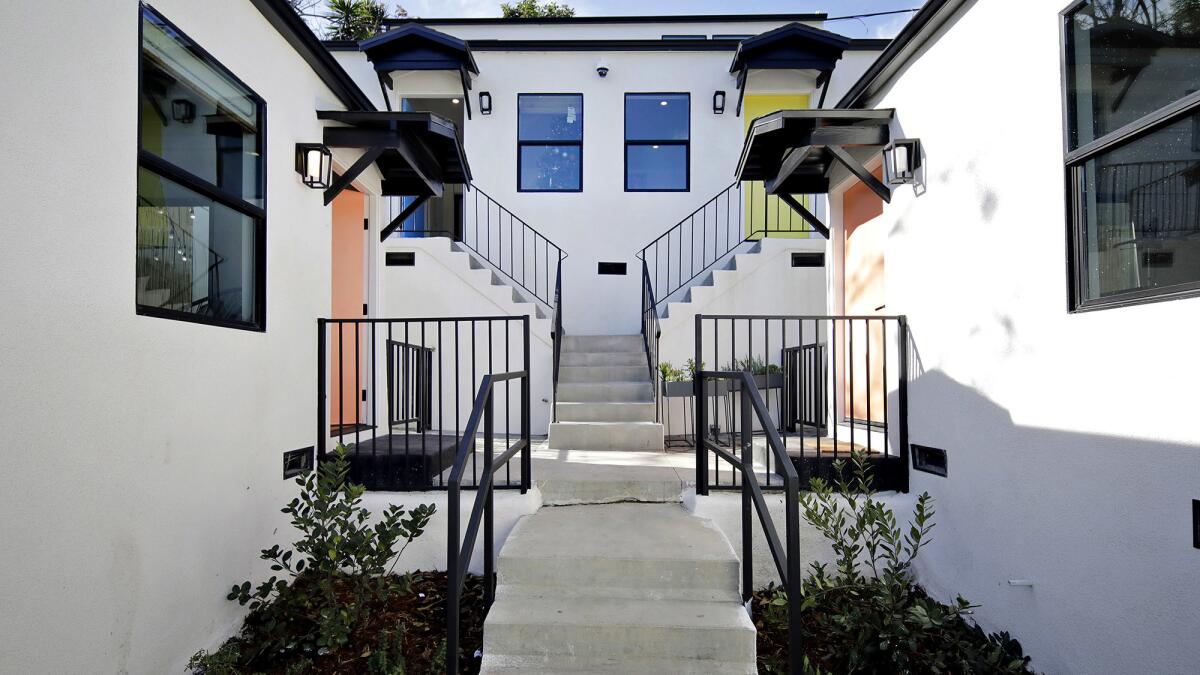
Khera, a former executive at global private equity real estate firm Blackstone, in 2016 founded a co-living company called Node as it became apparent that millennials valued travel, memorable events and friendships over possessions.
“The aspiration for the new generation growing up globally connected on Instagram is about experiences and connections,” he said. “That’s the stuff that’s cool.”
Promotional materials for Node’s new Echo Park outpost boast that its two 1920s-vintage bungalow court complexes are “Instagram ready,” featuring “curated” furnished interiors with designer kitchens that include retro-looking Smeg Italian refrigerators that retail for about $2,000.
The effect is indeed one of an apartment — each unit looks different — tricked out for a lifestyle magazine shoot, beyond the tastes and means of ordinary apartment dwellers left to their own decorating impulses.
“Our concept is like creating a SOHO House to live in,” said Khera, referring to a chain of members-only co-working clubs for people in creative fields known for chic interiors and sophisticated dining options.
Node, based in London, looks to convert old housing representative of the historic architectural style of its locale, such as a brownstone in Brooklyn, a 200-year-old Georgian Square housing complex in Dublin and the bungalow courts in Los Angeles.
Not all of the Echo Park units, which start at $2,850, are co-living. Many of them are meant for a single person or a couple. The close quarters of the bungalow court layout instill an aura of community, however, and Node envisions residents interacting with the encouragement of a “community curator” who will help people find roommates and arrange group events such as concerts and cookouts.
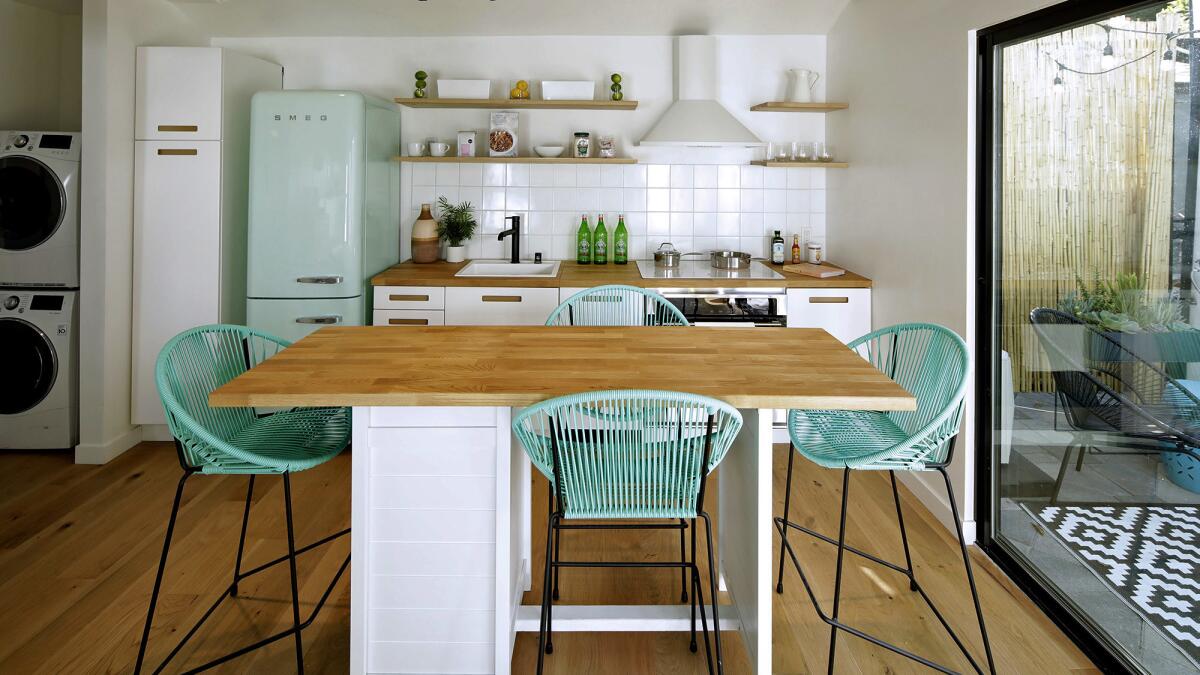
The notion of co-living is hardly new, housing expert Richard K. Green said, but there may be a market for the upscale version of it emerging now.
“A hundred years ago, people commonly lived in boarding houses, sharing a kitchen and a bathroom down the hall,” said Green, director of the USC Lusk Center for Real Estate.
The country is wealthier now and people are less accustomed to cohabitating with non-relatives, but the market is still potentially vast — about 16% of adults live with non-relatives such as roommates, Green said.
Still, it remains to be seen whether the emerging co-living luxury model will generate substantial demand. “Whether people will want to live this way in large numbers, I don’t know,” Green said.
Even Kahan of California Landmark, who funded C1 without institutional money, is taking baby steps. Only about 20% of the 68 units at the Marina del Rey complex are co-living; the rest are traditional singles and multi-bedrooms.
Green said small-scale tests of the concept, such as the projects emerging today, could attract venture capital, and “if it works you have an IPO and go from there.”
Starcity, one of the country’s largest co-living providers and the manager of California Landmark’s C1 building, is betting that there is a big niche it can profitably fill as housing costs rise in job-rich urban centers.
Starcity Chief Executive Jon Dishotsky launched the company in 2016 in San Francisco, where it developed its first co-living building, after polling young middle-income urbanites about how they were dealing with high housing costs.
The majority, he found, coped one of three ways: by commuting long distances from cheaper neighborhoods, by squeezing into small apartments with multiple roommates or by spending as much as 70% of their income on rent. There was no solution on the supply side of the equation to a “hair on fire” situation on the demand side, he said.
Starcity’s portfolio already has expanded to 300 units owned or managed, and it expects be operating 500 more units this year. An additional 3,000 are planned, mostly in San Francisco and Los Angeles County, Dishotsky said.
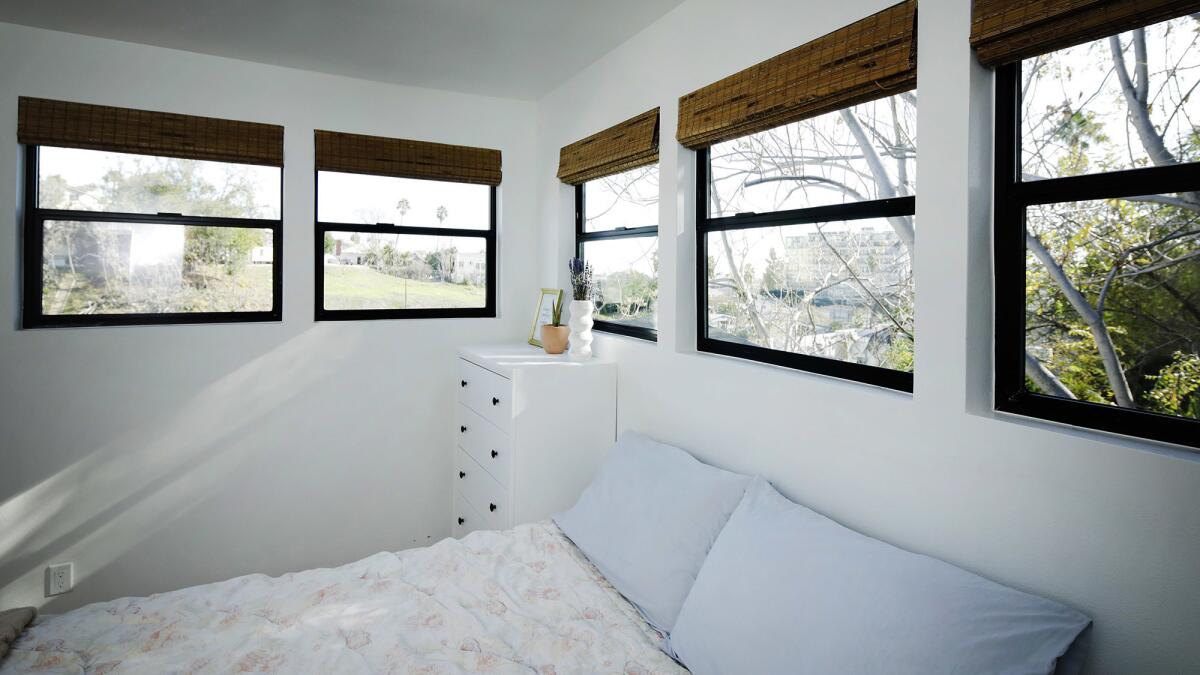
The co-housing model has proved profitable for the company, because there is a large pool of renters who cannot afford market rates but are willing to squeeze into shared units for a break on the rent. In Venice and near Marina del Rey, monthly Starcity rents will be in the low $2,000 range compared with about $3,000 for a nice studio apartment in the area.
Aside from the recent college graduates or other young people early in their careers who view co-living as a “lily pad” to land on before working their way up to more expensive, conventional housing, the model attracts a second group, Dishotsky said.
He calls them “restarters” — people between 30 and 50 who might be coming out of a divorce or are otherwise launching a second act in their lives. “Maybe they had a house and a family and want to be taken care of instead of taking care of other people.”
With either type, one of the challenges for managers of co-living arrangements is raising the probability that the tenants will get along.
The renters tend to be a self-selecting group adaptable to harmonious group living, developers say, but they reserve the authority to relocate people who aren’t getting along to other units or to eject troublemakers. Activity directors who work for the owners try to smooth disputes before they get problematic.
Co-living developers also do what they can to minimize disagreements among tenants by providing services such as housekeeping that can be a point of conflict. And with a few taps on a phone app, residents at C1 can get stress-reducing services for a fee, such as having staff walk their dogs or tidy up their bedrooms “because a special someone is coming over,” Dishotsky said.
A resident of Starcity’s Venice property, Jen McConnell, likes the residence’s online community messaging system where people check in with one another and find out about group events such as meditation, tea tasting and a trivia contest. It’s provided by Slack, the popular service that is displacing email in many offices.
The Chicago-based financial advisor in her 30s wanted to stay near the beach during her stay of a few months and was attracted to the communal nature of the three-floor Venice complex in part because she has few friends in town. She likes the neighborhood and the rooftop deck with ocean views.
“It’s maybe for people who are really focused on the location and the community,” she said.
The next frontier may be providing co-living beyond the current model aimed primarily at single adults by bringing more parents with children into the fold.
“We’re trying to figure out how to do this for families,” Dishotsky said, such as providing more spaces conducive to youngsters’ play and rooms for relatives and nannies.
“There is a generational shift,” said the developer, who at 34 is an older millennial. “Do I need a house with a white picket fence? Maybe not.”
Twitter: @rogervincent
More to Read
Inside the business of entertainment
The Wide Shot brings you news, analysis and insights on everything from streaming wars to production — and what it all means for the future.
You may occasionally receive promotional content from the Los Angeles Times.










